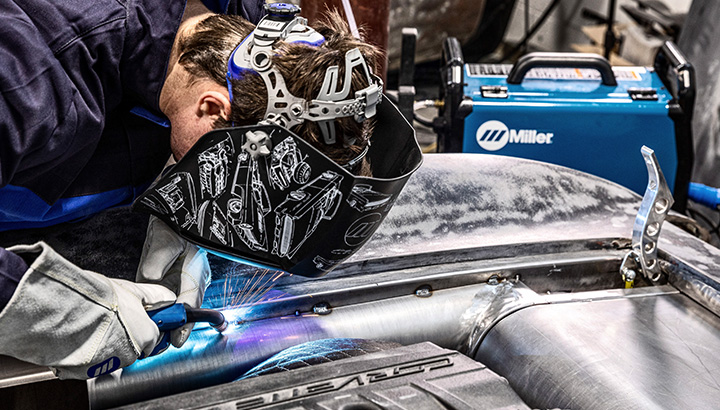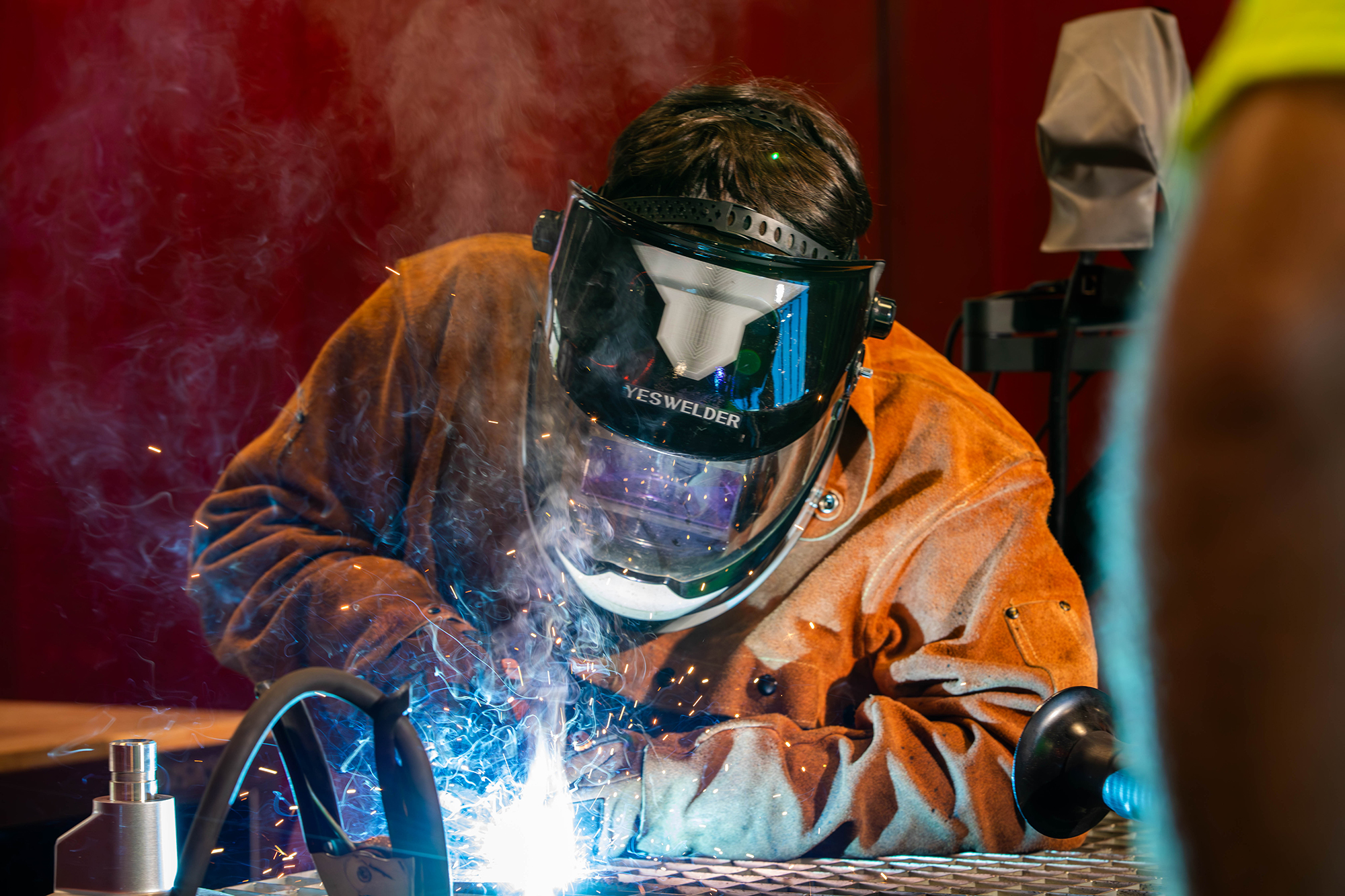Common Welding Fixing Issues and How to Address Them Successfully
Welding repair services frequently run into a series of concerns that can endanger the stability of the last product. Typical troubles consist of insufficient infiltration, porosity, and misalignment, amongst others. Each defect presents unique obstacles that need specific techniques for resolution. Comprehending these issues is vital for welders aiming to improve their skills and end results. This discussion will certainly discover these common welding fixing problems and efficient approaches to address them.
Insufficient Penetration
Insufficient infiltration occurs when the weld steel falls short to totally fuse with the base material, causing weak joints and potential architectural failures. This issue often stems from not enough warm input, incorrect electrode angle, or improper welding rate. Welders might come across insufficient penetration as a result of a mistake of the required criteria for a certain product density or type. Furthermore, contamination on the base product's surface can prevent efficient bonding, intensifying the problem. To deal with insufficient penetration, welders should assure ideal settings on their tools and keep a clean work surface. Regular evaluation of welds is recommended to identify any deficiencies early, enabling for prompt corrections and the avoidance of compromised structural honesty in welded settings up.
Porosity
Porosity is an usual flaw in bonded joints that shows up as tiny gas bubbles entraped within the weld metal. This problem can jeopardize the stability of the weld, leading to lowered toughness and potential failing under stress. Belgrade Fabrication. Porosity typically develops from contamination, moisture, or improper welding strategies, which permit gases to leave right into the molten weld swimming pool. To attend to porosity, welders ought to guarantee correct surface preparation, keep a clean workplace, and utilize ideal welding criteria. In addition, picking the right filler product and protecting gas can alleviate gas entrapment. Normal assessment and screening of welds can assist identify porosity early, guaranteeing prompt corrective activities are taken, thereby protecting the high quality and dependability of the bonded structure
Imbalance
Misalignment in welding can occur from different factors, including inappropriate arrangement and thermal growth. Recognizing the root creates is important for efficient resolution. Numerous adjustment strategies are offered to straighten parts and ensure architectural honesty.
Reasons for Imbalance
Welding imbalance often originates from a range of underlying problems that can jeopardize structural honesty. One key cause is improper fit-up of parts before welding, which can result in gaps and unequal surfaces. Variants in thermal growth throughout the welding procedure can additionally cause distortion, specifically if the materials being signed up with have different coefficients of expansion. Additionally, inadequate fixturing and clamping might fall short to hold components securely in position, resulting in movement throughout welding. Badly maintained devices, consisting of welding makers and tools, may present incongruities in the weld grain, additional adding to misalignment. Driver error, stemming from insufficient training or experience, can likewise play a considerable function in producing misaligned welds.

Adjustment Methods Readily Available
Resolving misalignment effectively calls for a mix of restorative methods customized to the particular concerns handy. One typical method is the use of fixtures or jigs to hold parts in the right placement during welding, making sure regular alignment. Furthermore, preheating the products can help in reducing distortion and enhance fit-up. For substantial imbalance, mechanical realignment methods, such as using hydraulic jacks or clamps, can be employed to correct the position prior to welding. Post-weld heat therapy might likewise be required to relieve stress and anxieties brought on by misalignment. Cautious evaluation and adjustment throughout the arrangement stage can stop misalignment problems from coming to be considerable problems, promoting a smoother welding process and improving total structural integrity.
Distortion
Distortion is an usual difficulty in welding that can develop from different variables, consisting of uneven heating & cooling. Recognizing the sources of distortion is crucial for implementing effective avoidance techniques. Addressing this problem not just boosts structural integrity however likewise enhances the general top quality of the weld.
Root causes of Distortion
When based on the extreme warmth of welding, materials commonly undertake modifications that can bring about distortion. This sensation largely arises from thermal growth and contraction throughout the welding procedure. As the weld area warms up, the material expands; upon cooling, it acquires, which can produce internal tensions. Additionally, unequal heating throughout a workpiece can aggravate these stress and anxieties, leading to bending or bending. The type of product additionally plays a substantial function; metals with differing thermal conductivity and coefficients of development may respond in different ways, leading to unpredictable distortions. Furthermore, inadequate joint design and poor fixturing can add to imbalance during welding, increasing the probability of distortion. Comprehending these reasons is important for efficient welding fixing and avoidance approaches.
Avoidance Techniques
Effective prevention techniques for distortion throughout welding concentrate on managing heat input and making certain appropriate joint design. Keeping a consistent warm input aids to decrease thermal expansion and contraction, which can cause distortion. Using methods such as preheating the workpiece can also decrease the temperature level slope, advertising consistent heating. Furthermore, picking appropriate joint layouts, such as T-joints or lap joints, can improve security and reduce tension focus. Implementing correct fixturing to secure the workpieces in position even more aids in keeping alignment during the welding process. Finally, staggered welding series can distribute heat more equally, protecting against local distortion. By applying these approaches, welders can significantly reduce the possibility of distortion and improve the overall top quality of their welds.
Splitting
Breaking is an usual issue come across in welding repairs, often arising from various factors such as incorrect cooling rates, material choice, or poor joint preparation. The event of splits can significantly compromise the stability of the weld, leading to possible failures during procedure. To address this concern, welders must initially assess the root creates, making sure that products work and properly chosen for the particular application. In addition, regulating the cooling price throughout the welding process is crucial; fast cooling can generate stress and lead to fracturing. Proper joint layout and prep work also add to reducing the danger. Implementing these strategies can boost weld high quality and toughness, eventually decreasing the chance of splitting in completed weldments.

Incomplete Blend
A substantial problem in welding repairs is incomplete blend, which takes place when the weld metal does not adequately bond with the base product or previous weld passes - Belgrade. This problem can cause weaknesses in the joint, possibly jeopardizing the honesty of the bonded framework. Factors adding to incomplete blend include not enough warmth input, inappropriate welding strategy, and contamination of the surface areas being signed up with. To address this concern effectively, welders must assure appropriate pre-weld cleansing and surface area preparation, along with readjust their welding specifications to attain sufficient infiltration and blend. Routine evaluation during the welding process can likewise help identify incomplete combination early, enabling timely rehabilitative measures to improve the total high quality of the weld
Overheating
While welding repair work can enhance structural honesty, overheating offers a significant obstacle that can bring about product degradation. Too much warmth throughout welding can alter the mechanical residential properties of metals, causing reduced stamina, boosted brittleness, and image source bending. This sensation is particularly critical in high-stress applications where structural reliability is paramount. Identifying overheating can involve aesthetic evaluations for discoloration or distortion, in addition to keeping an eye on temperature level throughout the welding procedure. To alleviate the dangers connected with overheating, welders need to use suitable strategies, such as regulating warm input, changing traveling speed, and using suitable filler products. Furthermore, applying pre- and post-weld warm treatments can assist bring back material buildings and YOURURL.com enhance the total quality of the repair work, making sure lasting efficiency and safety.
Often Asked Questions
What Are the Common Indications of a Welding Issue?

Exactly How Can I Test My Welds for Top quality?
To check welds for high quality, one can make use of aesthetic inspections, ultrasonic screening, and radiographic approaches. Each method guarantees architectural integrity, identifies problems, and verifies adherence to specified requirements, ultimately enhancing the reliability of the welded joints.
What Security Safety Measures Should I Take While Welding?
When welding, one ought to prioritize safety and security by putting on appropriate individual safety tools, making certain proper air flow, protecting combustible products away, keeping a clean workspace, and understanding environments to stop accidents and injuries.
Can I Repair a Weld Without Renovating the Entire Joint?
Repairing a weld without redoing the entire joint is possible, depending on the damages (Montana Mobile Welding and Repair Belgrade Welding). Strategies such as grinding, adding filler material, or utilizing a welding process can efficiently address specific flaws while maintaining the surrounding framework
What Tools Are Vital for Efficient Welding Repairs?
Necessary devices for effective welding repair services consist of a welding machine, cable brush, grinder, protective gear, clamps, and filler materials. Each tool plays a crucial duty in making certain top quality and safety and security during the repair procedure. Porosity typically occurs from contamination, dampness, or incorrect welding methods, which permit gases to get away right into the molten weld swimming pool. Inadequately maintained tools, consisting of welding devices and tools, may present variances in the weld grain, more adding to misalignment. When subjected to the intense heat of welding, materials often undertake adjustments that can lead to distortion. Breaking is an usual concern encountered in click for info welding repair work, frequently resulting from numerous elements such as incorrect cooling rates, material choice, or inadequate joint prep work. A substantial issue in welding repair services is incomplete fusion, which happens when the weld metal does not properly bond with the base material or previous weld passes.